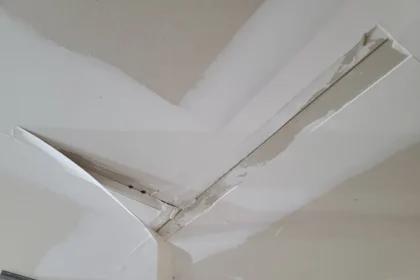Designing a home theater is about more than picking a large screen and powerful speakers. One of the most important factors that affect viewing experience is the Projector Throw Ratio. Throw ratio determines how far a projector must be placed from the screen to achieve the desired image size, impacting clarity, brightness, and overall immersion. Understanding throw ratio is critical to planning a home theater that is both functional and visually impressive. In this blog, we will explore the role of throw ratio in home theater design and how it influences projector selection, placement, and room layout.
Understanding Projector Throw Ratio
Projector Throw Ratio is the ratio of the distance from the projector to the screen divided by the width of the projected image. It can be calculated using the formula:
Throw Ratio = Distance from Projector to Screen ÷ Image Width
For example, if a projector is placed 12 feet from a screen that is 8 feet wide, the throw ratio is 12 ÷ 8 = 1.5. Projectors come with fixed throw ratios or adjustable zoom lenses, allowing flexibility in positioning the projector without compromising image quality.
Why Throw Ratio Is Critical in Home Theater Design
-
Image Size and Fit
The throw ratio determines how large the projected image will be at a given distance. Choosing the right ratio ensures that the image fills the screen perfectly without spilling over or being too small. -
Room Layout and Space Management
Home theaters vary in size and shape. Throw ratio helps designers position the projector correctly to fit the room while avoiding obstacles like furniture, walls, or ceiling beams. -
Image Clarity and Focus
Proper throw ratio placement maintains sharpness and uniformity across the screen, preventing distortion or blurriness. -
Viewing Comfort
Optimizing throw ratio ensures all viewers, whether seated in the front or back, have a comfortable and immersive viewing experience. -
Brightness and Color Accuracy
Distance from the screen affects how light spreads. A well-planned throw ratio preserves brightness and color consistency across the entire image.
Types of Throw Ratios in Home Theater Projectors
-
Short Throw Projectors
Short throw projectors have a throw ratio typically between 0.4 and 1.0. They can produce a large image from a few feet away, making them ideal for small living rooms or rooms with limited depth. -
Standard Throw Projectors
Standard throw projectors have throw ratios between 1.0 and 2.0. They are suitable for medium to large rooms, providing flexibility in placement while maintaining image quality. -
Ultra Short Throw Projectors
Ultra short throw projectors have ratios below 0.4, allowing them to project very large images from just a few inches away. These projectors are perfect for compact spaces or modern minimalistic designs.
How Throw Ratio Influences Home Theater Layout
1. Screen Size Selection
Before choosing a projector, determine the ideal screen width for your room. Once the screen width is known, the throw ratio can be used to calculate the ideal projector distance:
Projection Distance = Projector Throw Ratio × Screen Width
For example, an 8-foot wide screen with a projector that has a throw ratio of 1.5 should be placed 12 feet from the screen.
2. Projector Placement
Throw ratio guides where to mount the projector, whether ceiling mounted, table mounted, or wall placed. It ensures the image aligns perfectly with the screen and avoids keystone distortion.
3. Seating Arrangement
The throw ratio also influences seating layout. By optimizing the projector distance and screen size, all seats receive a consistent viewing experience without eye strain or distorted images.
4. Room Depth and Height Considerations
In rooms with limited depth, short throw or ultra short throw projectors can project large images without requiring significant space. In taller or deeper rooms, standard throw projectors may be preferable to maintain brightness and focus.
Practical Considerations
-
Zoom and Lens Shift
Many home theater projectors come with zoom lenses and lens shift options. These allow minor adjustments to throw ratio and projector alignment without physically moving the device. -
Ambient Light
Consider the room’s lighting conditions. A longer throw may reduce perceived brightness, so higher lumen projectors may be needed for well-lit rooms. -
Screen Material and Gain
The choice of screen material affects how light is reflected. High gain screens can allow more flexibility with throw ratio while maintaining brightness and contrast.
Examples of Home Theater Throw Ratio Applications
-
Small Living Room
A 100-inch screen with a short throw projector having a throw ratio of 0.8 can be placed approximately 6.7 feet away, filling the screen without overpowering the room. -
Medium Home Theater Room
A 120-inch screen with a standard throw projector at a throw ratio of 1.5 requires a projector distance of 15 feet, suitable for medium-sized dedicated home theaters. -
Ultra Compact Modern Space
An 80-inch screen with an ultra short throw projector at a ratio of 0.25 can be placed just 1.7 feet away, providing a large image in a small room with minimal installation requirements.
Tips for Optimizing Throw Ratio in Home Theater Design
-
Measure Room Dimensions Carefully
Consider width, depth, and ceiling height before selecting the projector and screen. -
Choose the Right Projector Type
Match the projector type—short throw, standard throw, or ultra short throw—with your room size and desired image dimensions. -
Use Zoom and Lens Shift for Fine Tuning
Adjust the projector lens to achieve the perfect image fit and alignment without moving furniture or the projector itself. -
Test Image Placement
Before final installation, test the projector at the calculated distance to ensure image clarity, focus, and alignment with the screen. -
Consider Future Upgrades
A projector with an adjustable throw ratio can accommodate future changes in room layout or screen size.
Conclusion
The Projector Throw Ratio plays a fundamental role in home theater design. It affects projector placement, image size, clarity, and overall viewer experience. Understanding throw ratio allows homeowners and designers to optimize room layout, select the appropriate projector type, and create an immersive cinematic experience.
Whether you are designing a small living room setup with a short throw projector, a medium-sized dedicated theater with a standard throw projector, or a modern minimalistic space with an ultra short throw projector, throw ratio ensures that every viewer enjoys the best possible picture quality. By planning carefully and considering throw ratio from the outset, you can build a home theater that delivers stunning visuals and long-lasting enjoyment.
Read more: https://audiovisual.hashnode.dev/whats-the-ideal-projector-throw-ratio-for-a-100-inch-screen



